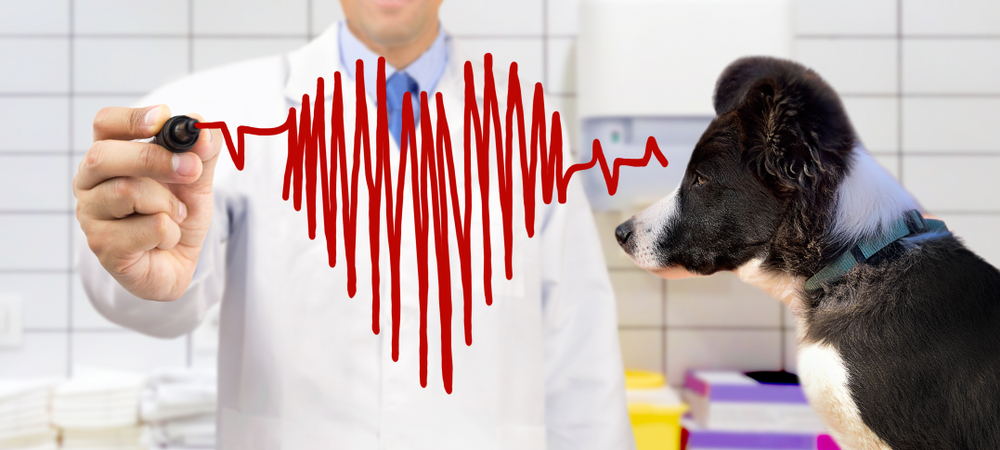The Duty of Ultrasound and CT Check in Modern Vet Practices: Insights From Experienced Professionals
In contemporary vet techniques, ultrasound and CT scans considerably boost analysis abilities. These imaging methods offer critical insights right into animal health and wellness, directing treatment choices. Experienced experts recognize the distinct advantages of each modality. Ultrasound provides real-time evaluations, while CT scans supply intricate physiological details. Comprehending their duties and applications elevates essential questions concerning their influence on person results and the future of veterinary diagnostics. What insights can be obtained from their integrated use?
Understanding Ultrasound in Vet Medication
Ultrasound is an important analysis tool in veterinary medicine, offering a non-invasive approach to imagine internal frameworks. This imaging strategy uses high-frequency acoustic waves to produce real-time images of cells and body organs, permitting vets to analyze problems without surgical intervention. Common applications consist of reviewing the heart, liver, kidneys, and reproductive organs, in addition to checking pregnancies.The treatment is reasonably quick and can be performed in numerous setups, making it an available alternative for veterinarians. Unlike radiography, ultrasound provides in-depth details about soft tissues and blood flow, which is crucial for precise diagnoses.Veterinary specialists count on ultrasound to identify abnormalities such as tumors, cysts, and fluid accumulation. Its ability to lead biopsies and other treatments additionally enhances its utility in clinical method. By using a secure and reliable means to analyze internal composition, ultrasound has actually become a foundation of modern vet diagnostics.
The Benefits of CT Scans for Pet Diagnostics
CT checks deal significant benefits in vet diagnostics by providing enhanced precision in recognizing interior conditions (CT Scans For Animals). As a non-invasive imaging technique, they guarantee the security and comfort of animals throughout evaluations. On top of that, CT scans promote a detailed analysis of internal structures, allowing for more reliable treatment planning
Boosted Analysis Precision
Developments in imaging technology have actually significantly boosted analysis precision in vet medicine, particularly with using CT scans. These scans offer in-depth cross-sectional images of a pet's internal frameworks, allowing veterinarians to recognize problems with precision. The high resolution and three-dimensional capabilities of CT imaging facilitate the discovery of conditions such as tumors, cracks, and interior blood loss that might be missed out on with typical imaging techniques. Additionally, CT scans can aid in pre-surgical preparation by offering a complete view of anatomical partnerships. This level of detail not just enhances the accuracy of medical diagnoses but likewise help in tailoring effective therapy plans. The integration of CT technology right into vet techniques is transforming the landscape of pet healthcare, enhancing results for patients.
Non-Invasive Imaging Strategy
The intro of non-invasive imaging techniques has changed pet diagnostics, with CT checks arising as a prominent device in veterinary techniques. These scans give high-resolution, cross-sectional pictures of an animal's internal structures, permitting veterinarians to analyze complicated problems without the requirement for invasive procedures. The advantages of CT scans include their capacity to discover tumors, fractures, and interior blood loss with exceptional precision. Additionally, they promote the analysis of soft tissues and body organs, improving analysis capacities. The speed of CT scanning enables quick decision-making, which is essential in emergency situation circumstances. By lessening tension and discomfort for the animal, CT scans add to a more humane strategy to diagnostics, ultimately enhancing therapy end results and progressing veterinary treatment.
Comprehensive Internal Evaluation
An extensive interior evaluation is crucial for exact diagnosis and reliable therapy in vet medication. CT scans deal considerable benefits in this respect, offering thorough cross-sectional photos of a pet's interior structures. This innovative imaging method enhances visualization of complicated physiological regions, enabling veterinarians to determine abnormalities such as lumps, cracks, and inner bleeding with better accuracy. Additionally, CT checks promote the analysis of problems that may be testing to identify via standard approaches. The rate and precision of CT imaging also contribute to timely interventions, boosting patient outcomes. As veterinary techniques increasingly integrate CT technology, the advantages of considerable internal assessments end up being apparent, enhancing the value of this tool in modern-day veterinary diagnostics.
Contrasting Ultrasound and CT Imaging Techniques
While both ultrasound and CT imaging offer important duties in veterinary diagnostics, each technique supplies distinctive benefits and limitations that can influence medical decision-making. Ultrasound is specifically valued for its real-time imaging capabilities, permitting veterinarians to observe vibrant physiological procedures. This technique is non-invasive, mobile, and does not include ionizing radiation, making it a more secure option for both clinicians and animals. Ultrasound may have limitations in imagining specific physiological structures or deep tissues.Conversely, CT imaging supplies in-depth cross-sectional sights of the body, enabling for accurate localization of irregularities. It masters examining complex body organs and frameworks, particularly in the thorax and abdomen. Nevertheless, CT scans call for sedation or anesthesia oftentimes and involve direct exposure to ionizing radiation. Ultimately, the choice between ultrasound and CT depends upon the details scientific situation, the area of rate of interest, and the necessity of the analysis requirements.
Situation Studies: Effective Diagnoses Via Imaging
Case research studies highlight the significant improvements in diagnostic precision achieved via innovative imaging innovations like ultrasound and CT scans in vet methods. These improvements not only enhance the discovery of numerous problems yet likewise help with effective and prompt therapy plans. Analyzing specific cases can highlight the transformative effect of these imaging methods on veterinary medicine.
Analysis Precision Improvements

Imaging Technology Advancements
As veterinary imaging innovation continues to evolve, its effect on analysis capabilities ends up being significantly evident. Current study highlight the successful application of sophisticated ultrasound and CT scan techniques in identifying complicated problems. For example, a vet facility made use of high-resolution CT scans to detect a rare type of lung cancer cells in a canine, which standard imaging had missed. Likewise, an ultrasound examination exposed an abdominal mass in a pet cat, prompting prompt surgical treatment and a positive result. These improvements not just improve diagnostic accuracy but likewise allow vets to develop targeted therapy strategies. By leveraging cutting-edge imaging modern technologies, vet specialists are markedly enhancing person care, bring about a lot more efficient management of different health and wellness conditions in animals.
The Duty of Imaging in Emergency Situation Vet Treatment
Imaging plays a necessary duty in emergency situation veterinary care, giving veterinarians with vital details required to make rapid, enlightened decisions. In immediate scenarios, methods like ultrasound and CT scans make it possible for practitioners to rapidly assess an animal's interior structures, identifying critical conditions such as interior blood loss, fractures, or body organ problems. These imaging methods allow for real-time analyses, assisting in prompt treatments that can be why not try here life-saving. For example, ultrasound is vital for assessing soft cells injuries and problems like fluid accumulation, while CT scans offer in-depth pictures of complicated physiological structures, essential for identifying trauma cases. The speed and accuracy of these imaging methods boost the veterinarian's capability to devise reliable therapy plans, ensuring the very best feasible results for their people. Subsequently, the combination of innovative imaging modern technologies into emergency situation vet methods is not only advantageous yet increasingly needed, as it improves analysis abilities and enhances overall animal care throughout defining moments.
Training and Experience in Veterinary Imaging
Advanced imaging techniques such as ultrasound and CT scans are important for effective veterinary treatment, the effective application of these modern technologies greatly depends on the training and experience of veterinary experts. Proficient use imaging tools needs detailed knowledge of makeup, pathology, and the principles underlying each method. Vet experts need to undergo specific training to accurately interpret imaging outcomes, which is crucial for diagnosing conditions and intending treatment.Certifications and continuing education and learning in veterinary imaging enhance the abilities of professionals, allowing them to remain upgraded with technical innovations. Partnership in between vets and radiologists typically leads to boosted analysis precision, as experts can supply understandings into intricate cases. Additionally, functional experience in dealing with imaging tools fosters self-confidence in its application. Eventually, the quality of vet imaging solutions is straight correlated to the level of training and competence had by the specialists using these crucial analysis devices.
Future Trends in Diagnostic Imaging for Animals
With the rapid developments in innovation, veterinary diagnostic imaging is poised for significant development in the coming years. Arising trends suggest a shift towards more mobile and obtainable imaging methods, such as handheld ultrasound tools, which could boost area diagnostics. Additionally, the integration of man-made knowledge is expected to reinvent image analysis, permitting for quicker site web and much more accurate interpretations of results.Moreover, developments in 3D imaging strategies and computed tomography will certainly provide vets with more complete views of animal composition, resulting in enhanced therapy plans. Digital reality technology might additionally contribute in surgical preparation and education and learning, offering veterinarians an unique point of view on intricate cases.As telemedicine continues to grow, remote appointments assisted in by diagnostic imaging will end up being extra typical, permitting experts to aid family doctors in real-time. Generally, these patterns are established to improve the efficiency and efficiency of veterinary treatment, eventually improving pet end results.
Often Asked Inquiries
Just How Much Do Ultrasound and CT Checks Expense in Veterinary Facilities?
The expenses of ultrasound and CT scans in vet clinics usually range from $300 to $1,500, relying on elements such as area, center type, and details treatments needed for the animal's diagnosis and treatment.

Exist Any Kind Of Dangers Associated With Ultrasound and CT Checks for Family Pets?
Ultrasound and CT scans typically posture marginal dangers to pets. However, prospective problems consist of sedation reactions and exposure to anesthetics. Board Certified Veterinary Cardiologist. Vets thoroughly examine each instance to alleviate any type of dangers connected with these analysis treatments
The Length Of Time Do Ultrasound and CT Treatments Typically Take?
Ultrasound treatments usually take about half an hour to an hour, depending upon the intricacy. CT scans, being more thorough, normally call for 30 mins to 90 mins, consisting of preparation and recuperation time for the pet.
Can All Veterinarians Perform Ultrasounds and CT Scans?
Not all vets can carry out ultrasounds and CT scans. Specialized training and qualification are frequently required to ensure expertise in these advanced imaging methods, which may limit their accessibility to veterinarians with extra credentials and resources.
What Types of Animals Profit A Lot Of From These Imaging Techniques?
Particular pet types, specifically canines and pet cats, advantage considerably from ultrasound and CT scans. These imaging strategies enhance diagnostic precision for problems like tumors, inner injuries, and body organ problems, leading to enhanced treatment end results and individual treatment. The high resolution and three-dimensional capabilities of CT imaging promote the discovery of problems such as growths, fractures, and inner bleeding that may be missed out on with traditional imaging methods. Case studies show the considerable improvements in diagnostic precision attained via innovative imaging technologies like ultrasound and CT scans in veterinary practices. Improving diagnostic precision in veterinary methods has actually been considerably aided by advancements in imaging innovations such as ultrasound and CT scans. Sophisticated imaging methods such as ultrasound and CT scans are vital for efficient vet care, the effective execution of these modern technologies heavily depends on the training and expertise of vet professionals. Veterinary specialists have to undergo customized training to accurately interpret imaging outcomes, which is vital for diagnosing problems and preparing treatment.Certifications and proceeding education and learning in vet imaging improve the skills of specialists, enabling them to remain updated with technical improvements.